20 Unique Software as a Service (SaaS) Application Examples To Follow In 2025
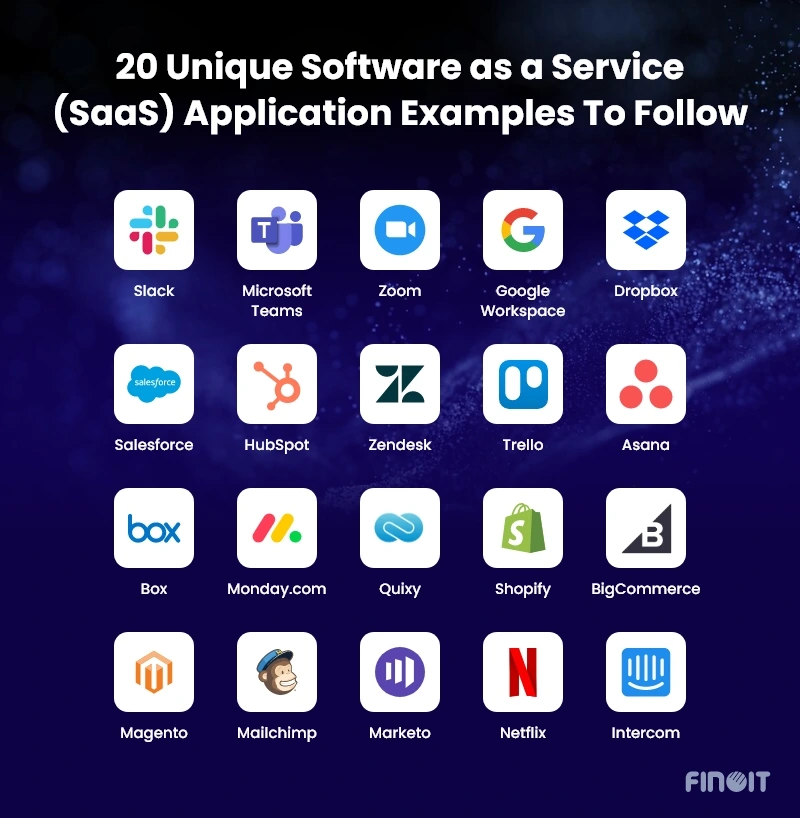
Starting a software-as-a-service (SaaS) business continues to be one of the most promising ventures for entrepreneurs. The allure lies in the potential for growth, recurring revenue, and the ability to tap into a global audience. Due to many businesses going with the SaaS model, the SaaS market size is expected to reach 793.10 billion USD by 2029 while growing at a CAGR of 19.38% from 2025.
But before taking the plunge, many look toward success stories for guidance and inspiration.
We set you on the path by discussing 20 SaaS examples from across different areas such as communication and collaboration, customer relationship management (CRM), project management, eCommerce, marketing automation, entertainment, customer support and engagement.
These SaaS applications had humble beginnings. However, through incremental and diligent improvement efforts, they evolved into successful SaaS businesses, giving a lesson on realizing value in SaaS. Let’s take a closer look at how these 20 SaaS businesses grew into the influential platforms they are today.
Communication and Collaboration
SaaS, Microsoft Teams, Zoom, Google Workspace, Dropbox, and Box are the well-known SaaS products that have built a distinguishable presence by transforming the way businesses collaborate. Let’s look at how these software-as-a-service (SaaS) offerings have grown successfully.
1. Slack

Originally developed as an internal tool at Tiny Speck during the creation of the game Glitch, Slack was launched in 2013 and quickly became a leading team collaboration platform. The platform’s core strength lies in its channel-based communication structure, where users can create distinct channels dedicated to specific teams or topics. The real-time messaging capability and the integration of over 2,500 applications, such as Google Drive and Trello, give users more ways to stay organized and manage projects.
Slack’s impact on productivity has been remarkable, with a reported 32% reduction in internal emails and a 23% drop in meetings among users. It allows teams to communicate asynchronously and still remain on the same page.
Available across Windows, macOS, Linux, Android, and iOS, Slack allows seamless connection across multiple devices, making it a go-to for remote and hybrid teams alike. Today, the platform also offers enterprise-grade security features, with compliance to regulations such as GDPR, HIPAA, and FINRA, making it a trusted choice for businesses in highly regulated sectors.
Salesforce’s acquisition of Slack for $28 billion in July 2021, the largest subscription software deal at the time, further elevated its status in the SaaS market. In 2023, Slack had an average of 32.3 million daily active users that are expected to grow to 47.2 million by 2025. It achieved $5.967 billion in annual revenue, marking its strong foothold in business communication.
2. Microsoft Teams
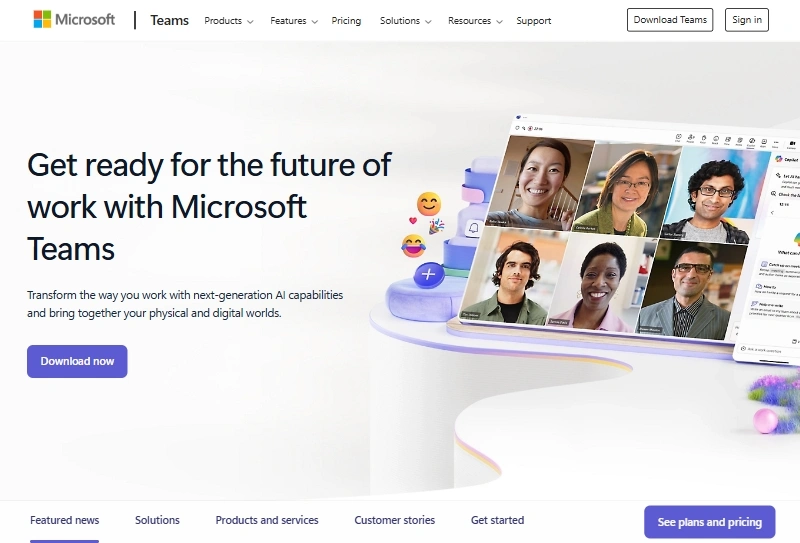
Microsoft Teams, which debuted in 2016 as part of the Office 365 suite, has grown into a powerful collaboration tool, offering features that go beyond just chat. The strong side for Teams is that it is a product of a tech giant. It integrates chat, voice, video calls, and file-sharing capabilities, making it easy for businesses to manage all their communications in one platform. The ability to create dedicated channels for specific teams or topics provides an organized approach, and improves the way people collaborate without constantly switching between tools.
One of the standout features of Microsoft Teams is the video conferencing option, which supports up to 250 participants and broadcasts for up to 10,000 viewers. The capability has made Teams a strong contender in both everyday team meetings and large-scale webinars. Its deep integration with Microsoft 365 allows users to create and manage documents in applications like Word, Excel, and PowerPoint directly within Teams. Additionally, you can save files in SharePoint.
With over 320 million monthly active users in the beginning of 2024 and a presence in 190 countries, Microsoft Teams has become a key player in the collaboration software space. It comes with AI-powered features like intelligent meeting recaps, which help summarize and highlight important points from meetings. The platform’s widespread adoption is evident from the fact that over 91 out of the Fortune 100 companies use it, and it continues to expand its global reach by supporting over 50 languages.
3. Zoom
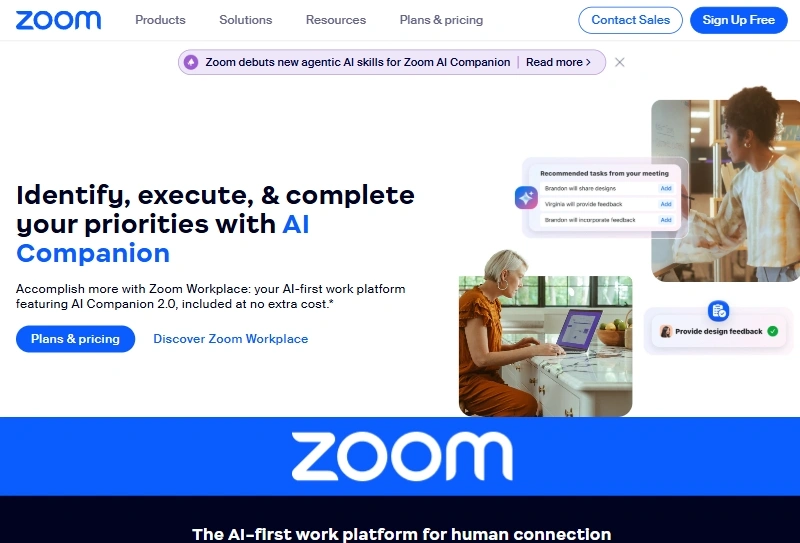
Growing into a top-tier video conferencing tool, Zoom became a household name almost overnight. Initially popular in corporate environments, its simplicity and easy to use features made it a preferred software-as-a-service (SaaS) solution across various sectors, including education and personal communication. As of 2023, Zoom accounted for over 3.3 trillion meeting minutes annually, which was a 65% increase from the previous year, reflecting the tool’s massive reach and widespread application in virtual communication.
What sets Zoom apart is its ability to scale, as it accommodates everything – from small team meetings to large webinars with thousands of attendees. The platform can host meetings with up to 1,000 participants and webinars with up to 10,000 view-only attendees. Features like screen sharing, breakout rooms, and virtual whiteboards offer ease to collaborate, while chat functionalities enable team interactions during and outside of meetings. Zoom also integrates with other popular collaboration tools like Microsoft Teams and Google Workspace and is thus a convenient platform to use.
Despite stiff competition, Zoom captures around 15% of the overall collaboration software market, sitting behind Microsoft Teams and Google Workspace. With 350 million daily users and a revenue of $4.59 billion, Zoom continues to be a dominant player in the video conferencing space. The platform’s influence extends into enterprise environments, where more than half of Fortune 500 companies rely on it.
4. Google Workspace (Formerly G Suite)
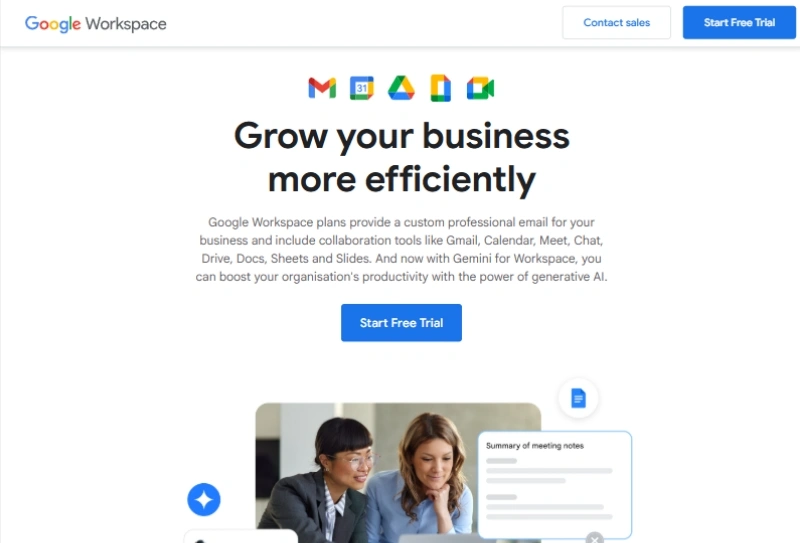
Launched in 2006 as Google Apps for Your Domain, the service evolved into G Suite in 2016 and rebranded to Google Workspace in 2020. The goal was to offer a tool to support modern work environments. It’s a suite of tools, including Gmail, Google Drive, Docs, Sheets, Slides, Calendar, Meet, and Chat, which provides an all-in-one SaaS solution for businesses, supporting everything from email communication to document collaboration.
A key advantage of Google Workspace is its cloud-first nature through which users are able to work from any device with internet connectivity. Powered with these features, Google Workspace has been the backbone of working of remote and hybrid teams. It offers various pricing tiers that make it suitable for businesses of all sizes, and there are options for additional storage and features based on business needs.
In 2023, Google Workspace had over 8 million paying businesses globally and continues to grow its user base. Besides corporate, it is widely used in the educational sector. With over 8 million paying customers and an extensive global reach, Google Workspace remains a strong player in the software-as-a-service (SaaS) market.
5. Dropbox
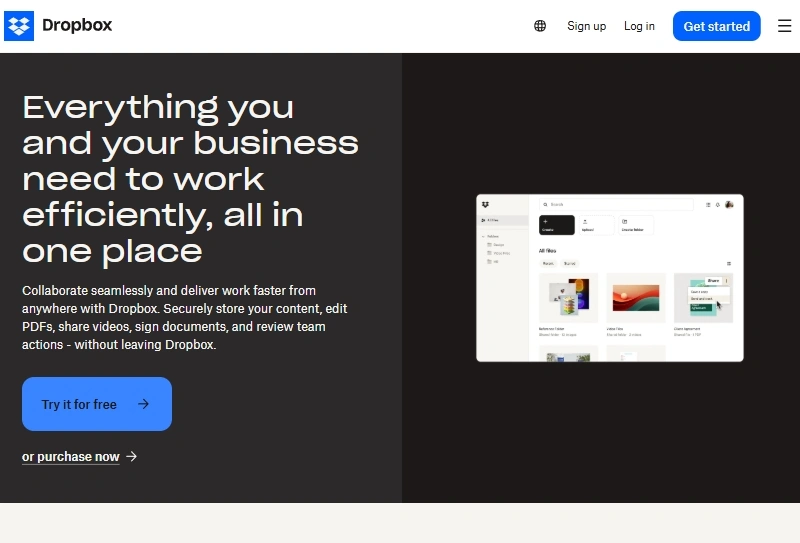
Dropbox was founded way back in 2007 by MIT students Drew Houston and Arash Ferdowsi. Since then it has evolved from a simple cloud storage solution to a powerful tool for file synchronization and team collaboration. The platform initially gained traction through its freemium model, which offered users 2GB of free storage with paid options for those needing more capacity. Today, Dropbox is a widely used tool as users upload approximately 1.2 billion files daily.
What appeals users to Dropbox is its simplicity. Users can share files with a few clicks and collaborate through shared folders and links. These features have made it a popular choice for businesses as well as individuals looking for an intuitive cloud storage solution. It also supports robust security measures like AES-256 bit encryption and two-step verification, and also integrates with third-party tools.
By 2023, Dropbox had generated $2.5 billion in revenue, and had 18.12 million users. It supports around 20 languages and its global footprint spans 180. The tool continues to stand as the fourth most popular cloud storage service, trailing behind Google Drive, Apple iCloud, and Microsoft OneDrive.
6. Box
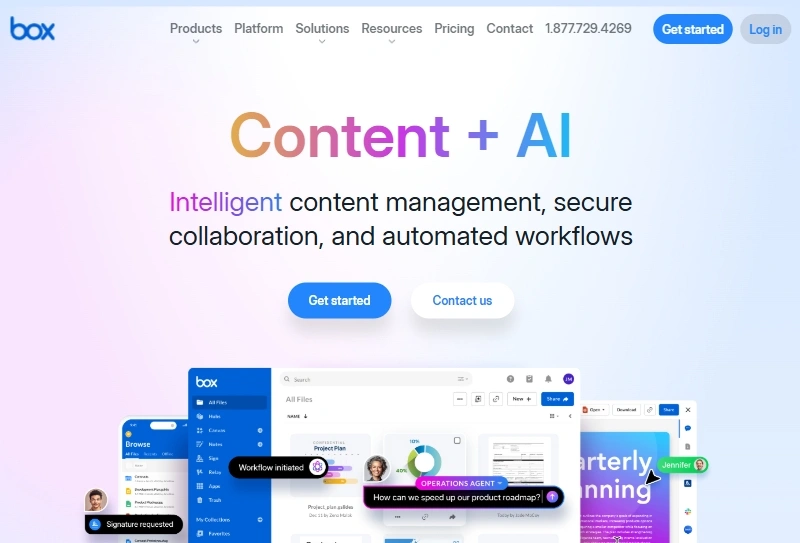
Box is another known SaaS tool that features in this list of top collaboration platforms. It has carved out a niche in the cloud storage and collaboration market by focusing on content management for enterprises.
Founded in 2005, Box is now used by over 90,000 customers, including several Fortune 500 companies. The platform provides powerful collaboration tools, such as real-time editing, task assignments, version history, and integrations with over 1,500 applications. It is thus an ideal tool for teams managing large projects and documents.
Box has been distinguishing itself through features like Box Notes, which allow users to edit documents simultaneously. Further, it offers different access levels through which users can control who can view, edit, or co-own content. The platform also includes PDF creation and signing tools through a partnership with Adobe.
When it comes to security, the platform is known for its enterprise-grade features, which meet compliance standards such as GDPR, HIPAA, and FedRAMP.
Due to its increasing usage, Box’s revenue climbed to $1.038 billion in 2024, up 5% from $0.991 billion in 2023. Box’s continued focus on enterprise needs has allowed it to remain a leader in the cloud content management space.
Customer Relationship Management (CRM)
For a CRM entrepreneur, these are the three best examples of SaaS (Salesforce, Hubspot, Zendesk) you need to know in 2025 and walk in the footsteps of. Let’s understand more about these industry leaders and their success journey.
7. Salesforce
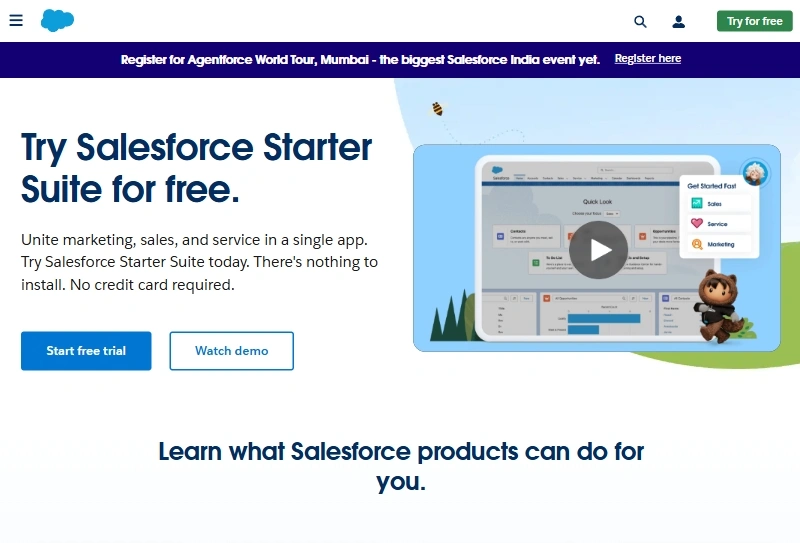
Salesforce started as a bold experiment in delivering software over the internet, spearheaded by Marc Benioff and his team in 1999. Today it’s one of the topmost B2B SaaS platforms. At a time when businesses primarily relied on on-premise solutions, Salesforce introduced an entirely new approach. It offered customer relationship management (CRM) services via the cloud-based software and broke free from the constraints of traditional software models.
Salesforce’s public listing in 2004 solidified their position, and the $110 million raised signaled a shift in how companies viewed enterprise software. It wasn’t long before Salesforce expanded beyond CRM, expanding into specialized services like Sales Cloud, Service Cloud, and Commerce Cloud.
A defining moment came in 2016 with the launch of Einstein, an AI-driven tool. Rather than just managing customer relationships, Salesforce shifted gears. With the tool’s predictive analytics capabilities, businesses could anticipate customer needs. The company didn’t stop there. They broadened their ecosystem with an online marketplace, making third-party integrations easier than ever. With all these innovations, Salesforce is now the largest player in enterprise software, commanding an impressive 22% of the CRM market.
Salesforce’s growth journey is an inspiration to follow for SaaS startups. The revenue jumped from a mere $176 million in 2005 to nearly $35 billion in 2024, with projections forecasting $50 billion by 2026. With over 150,000 customers globally, Salesforce continues to shape the future of cloud computing. It’s a widely used tool, because it has generated results. Businesses that adopt Salesforce report a significant improvement in marketing ROI.
8. HubSpot

Founded in 2006, HubSpot began with a simple yet transformative idea: inbound marketing. It is a household name in the marketing world. Brian Halligan and Dharmesh Shah wanted to shift the focus from interruptive advertising to value-driven content. By attracting customers through meaningful engagement, HubSpot set a trend that many have since followed.
HubSpot started small, but over time it expanded its suite of tools to include everything from marketing automation to customer relationship management (CRM). Their offering of a free CRM with limited features also opened doors for small businesses that could scale without upfront costs.
Notably, HubSpot didn’t just innovate in marketing. It evolved, adding tools like Sales Hub and Service Hub, aimed at sales automation and customer service improvements. It brought AI-powered tools such as ChatSpot, and remains a step ahead in delivering real-time insights and automation. The platform’s ability to centralize a business’s marketing, sales, and service functions into one ecosystem continues to be its selling point.
Over the years, HubSpot’s customer base has exploded. By Q1 2024, it had 216,840 paying customers, a far cry from their early days. At $2.17 billion in 2023, its revenue too. As they continue to innovate, their foothold in inbound marketing and CRM solutions remains firm. In a nutshell, HubSpot is an epitome of how building strong customer relationships through content and innovation can pay off in the long run.
9. Zendesk
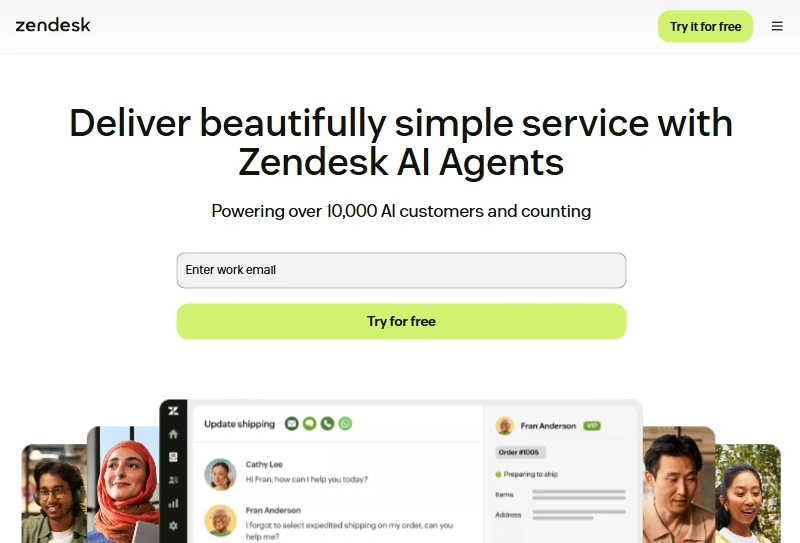
Zendesk’s rise to prominence can be traced back to its user-centric approach to customer service. Since its inception, it has been focused on simplifying the way businesses handle customer inquiries, by offering great ticketing and communication capabilities. Businesses of all sizes have benefited from its offerings, and major players like Airbnb and Uber have adopted Zendesk to manage their customer interactions.
Available in over 60 languages and offering more than 1,300 integrations, it has expanded its utility far beyond simple ticketing systems. From mobile support to integration with third-party applications, Zendesk’s flexibility has made it indispensable to a wide range of industries, especially those with global operations.
Zendesk’s CX Trends 2023 Report highlights how important it is for businesses to engage customers where they already are. With 64% of customers willing to spend more for better service, Zendesk’s focus on omnichannel support is timely. The platform has solidified its place in the customer support ecosystem, where the quality of service can make or break brand loyalty.
Project Management
Trello, Asana, Monday.com, and Quixy are the known project management software SaaS products that have successfully risen above the rest and established themselves as leaders. These SaaS products stand out in the stiff competition due to their strong functionalities.
10. Trello
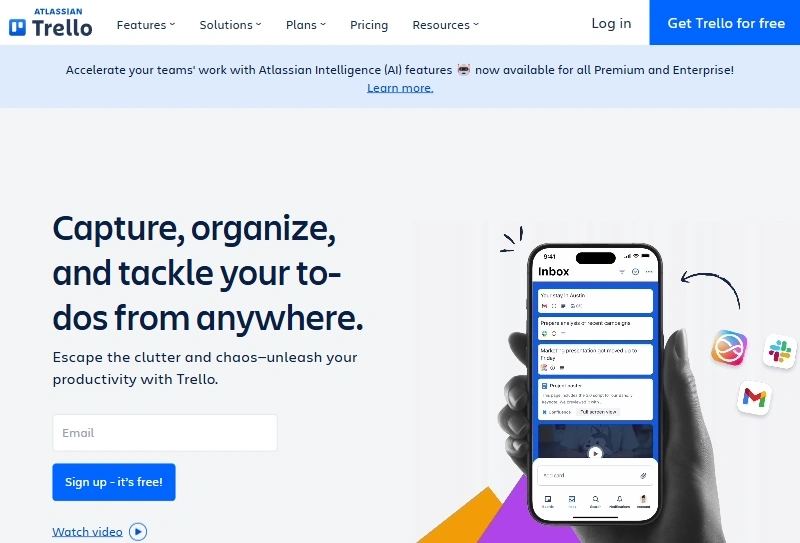
Back in 2011, Fog Creek Software introduced Trello, which quickly became a game-changer in project management. Initially designed as a simple visual tool, it allowed users to create boards where tasks were represented by cards that could be moved between lists representing different stages of progress. Its intuitive drag-and-drop interface made it accessible for small teams and personal use.
By 2014, Trello’s growing popularity led to it being spun out as a separate entity, gaining traction among businesses looking for an easy-to-use project management solution. A major leap forward came with the introduction of Power-Ups. These integrations with other tools like Slack, Gmail, and other popular apps offered extra functionality to their boards without complex setups. Trello’s simplicity, combined with these added features, offered its user flexibility to automate tasks, generate reports, and customize their workflows.
Atlassian snapped Trello up in 2017 for a staggering $425 million, because it saw a huge potential in its global user base and adaptability. With over 90 million users worldwide (of which 80% are from Fortune 500s), today, Trello remains a favorite across various industries. Whether it’s a small business tracking projects or a large team needing more advanced features such as timelines and dashboards, Trello’s pricing plans cater to all. The platform’s mobile app downloads and significant web traffic demonstrate its success in the SaaS space.
11. Asana

A SaaS product Launched in 2008 by Dustin Moskovitz and Justin Rosenstein, Asana emerged from their experiences at Facebook, where they identified gaps in task management efficiency. Their goal was to create a tool that could help teams organize work, stay aligned, and drive results faster.
Over the years, Asana evolved into a comprehensive project management platform that supports over 75,000 paying customers globally. It’s especially known for its sleek interface and powerful features. Users can track tasks, set deadlines, and collaborate smoothly through a single space.
Asana also offers a wide range of integrations. Users can connect it to over 100 other tools like Google Drive, Slack, and Dropbox and streamline workflows, which eliminates the need to juggle multiple apps. The platform’s capabilities extend beyond basic task tracking, as it offers advanced features like goal-setting, timeline views, and detailed reporting, useful for both small teams and large enterprises.
The impact created by Asana has been substantial, with users creating billions of tasks and automating workflows at an impressive scale. Getting featured in Gartner’s Magic Quadrant and consistent rankings in Forbes’ Cloud 100 showcase its status as a leader in the SaaS world.
12. Monday.com
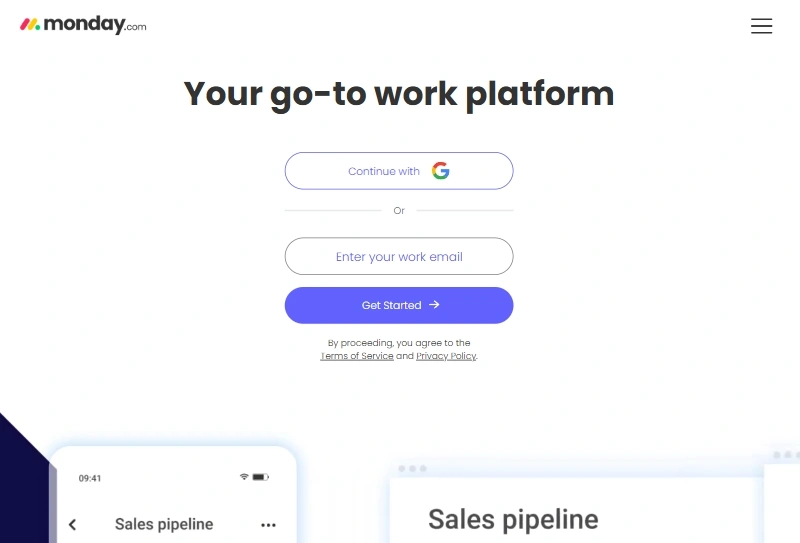
Monday.com entered the SaaS arena in 2014, originally under the name Dapulse. Co-founded by Roy Mann, Eran Kampf, and Eran Zinman, the platform was designed with the vision of making project management not just efficient but highly customizable. Today, it is one of the best SaaS applications for project management.
From the get-go, Monday.com set itself apart by allowing users to tailor their workflows through custom-built apps. Teams didn’t need technical expertise to visualize data and track projects. Later, its transformation into a Work OS gave it a unique edge, where businesses could mold the platform to suit their exact needs.
After securing significant funding, Monday.com continued to gain momentum, culminating in a successful IPO in 2021. Its flexible pricing and vast array of features, such as data visualization, reporting tools, and integrations with over 50 platforms like Slack and Microsoft Teams, made it a go-to tool for teams across various sectors.
Today, with over 225K+ customers and support for multiple languages, Monday.com stands as a favorite among teams globally. Its reputation for ease of use and customizable functionality has earned it numerous accolades, including Webby Awards and recognition from Gartner. This is how it has positioned itself as a top-tier SaaS platform for project management.
13. Quixy
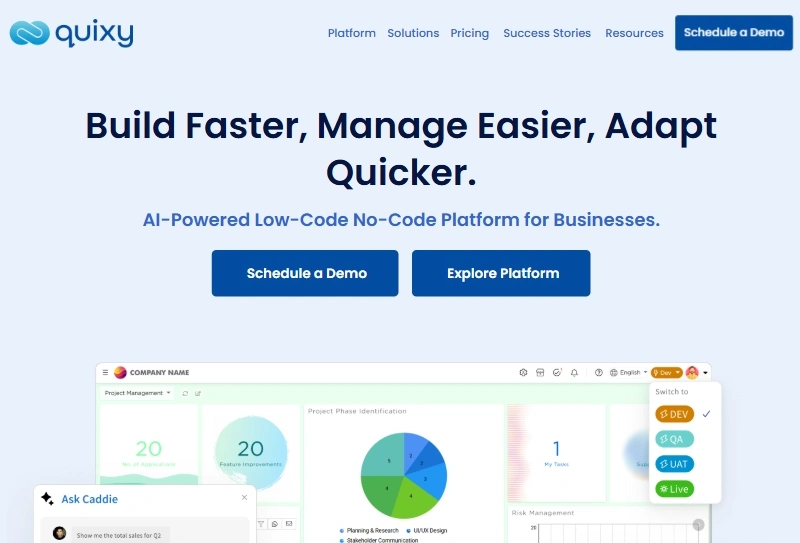
A no-code platform launched with a focus on driving digital transformation, Quixy caters to businesses seeking to streamline project management without the complexities of traditional coding. Users can build customized apps rapidly, which is why the tool is particularly appealing for organizations looking to automate task management and project tracking. Having partnership with Zapier, it supports integrations with over 3,000 apps and has contributed significantly to its success as well as aiding the process of citizen development.
Like other successful project management tools, Quixy comes with a user-friendly interface and offers automated workflows with which organizations can replace outdated, manual processes with optimized, smooth workflows. Users have reported substantial gains, including a 70% increase in operational efficiency and higher project success rates. Its robust features allow for advanced task prioritization and real-time project tracking, which makes it a reliable tool for both in-house teams and field operations.
Quixy’s high-performance capabilities translate into better budget control and faster project completion. As a platform focused on innovation and practicality, it has established itself as a top choice for businesses seeking no-code solutions to manage their projects.
eCommerce
There are many online store builders today, but Shopify, BigCommerce, and Magneto are the eCommerce SaaS offerings that are considered reliable. These are distinguished by their extensive set of capabilities for building a comprehensive eCommerce platform.
14. Shopify
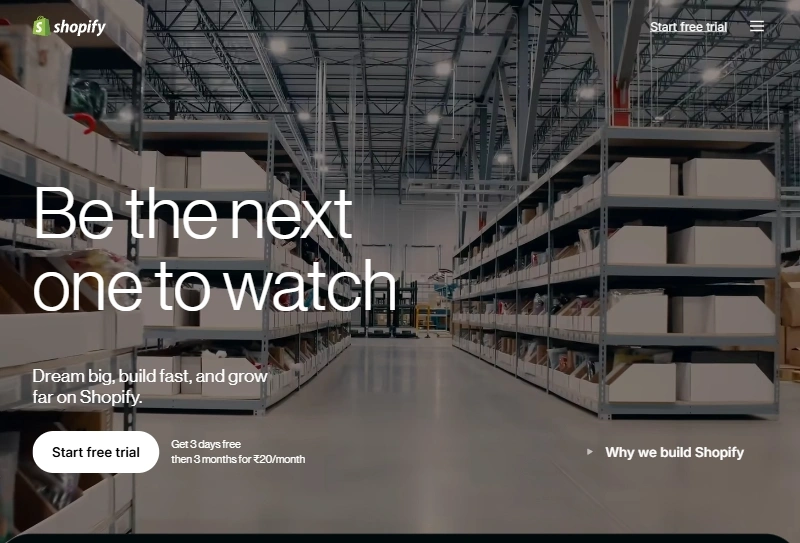
Starting out in 2006 as a niche snowboarding equipment store, Shopify quickly shifted gears to become one of the most dominant eCommerce platforms globally. Founded by Tobias Lütke, Daniel Weinand, and Scott Lake, it was initially created to meet the founders’ own needs but quickly grew into a solution for countless businesses.
By 2023, Shopify had morphed into a massive force, hosting nearly 5.23 million stores – as of August 2024 – across more than 175 countries. Its success wasn’t accidental but rather the result of a well-crafted blend of eCommerce tools, that today ranges from payment processing to advanced marketing capabilities.
Shopify’s business model offers merchants, both small and large, an opportunity to establish and grow their online presence without the need for heavy IT knowledge. Its app store, boasting nearly 10,000 applications, allows users to expand the functionality of their stores with minimal effort. Almost 87% of merchants regularly use these apps, showing just how essential they’ve become for day-to-day operations.
A strong community of high-profile users, including brands like Kylie Cosmetics and celebrities like Adele, has also boosted Shopify’s reputation, which has solidified its presence across the fashion and retail industries.
Shopify’s financial performance is equally impressive. The company pulled in $7.06 billion in revenue in 2023, marking a year-on-year increase of over 26%. By the first quarter of 2024, its gross profit dollars surged by 33% to $957 million. With a stunning market share of 32% in the US eCommerce platform industry, Shopify’s influence extends beyond just individual merchants. It has become a driving force in shaping the global online retail landscape.
15. BigCommerce

Launched in 2009 by Eddie Machaalani and Mitchell Harper, BigCommerce took a straightforward path to success. Unlike Shopify, which offers a wide array of third-party app integrations, BigCommerce focuses on providing merchants with built-in features.
BigCommerce has evolved to support more than 90,000 online stores, supporting both B2C and B2B businesses across 150 countries. BigCommerce’s ability to cater to such a diverse audience, from small startups to well-established brands like Harvey Nichols, has helped it carve out a strong position in the competitive SaaS eCommerce market.
Customization remains one of BigCommerce’s strongest selling points. Merchants have the ability to tailor their stores to reflect their brand identity through themes, color palettes, fonts, and other design elements. Through integration with social media platforms, such as Facebook and Instagram, sellers can extend their reach. Additionally, the platform supports multiple currencies and local payment methods which makes it a great choice for businesses looking to operate in a global market.
Recent growth figures of BigCommerce demonstrate its rising popularity. By the second quarter of 2024, the platform witnessed a 4.5% quarterly increase in store count and a 21% year-over-year rise. With an annual revenue run rate of $345.8 million, BigCommerce continues to prove its mettle in the eCommerce SaaS space.
16. Magento (Adobe Commerce)
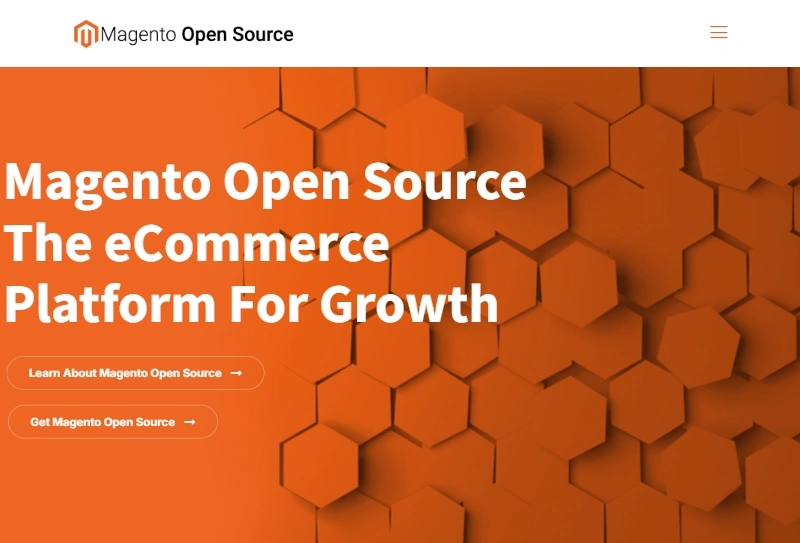
Magento’s journey began in 2008 when Roy Rubin and Yoav Kutner launched it under Varien Inc and quickly attracted the attention of large-scale enterprises. After recognizing its potential as a powerhouse in eCommerce, by 2011, eBay had bought a majority stake in the company, and in 2018 Adobe acquired Magento for $1.68 billion.
Major brands like Samsung, Nike, and Coca-Cola have long relied on Magento for its ability to handle complex online store requirements. The platform is currently responsible for over $155 billion in gross merchandise volume annually, and this is how it supports high-level transactions.
What sets Magento apart from competitors like Shopify or BigCommerce is the level of customization, scalability and control it offers. Magento’s marketplace, with over 3,500 extensions, allows businesses to adapt their online stores to meet very specific needs. Its open-source foundation lets developers tweak the platform according to the business requirements. All these features give Magento an edge.
Magento’s growth in recent years has been notable. It registered a 29% increase in revenue during 2023 alone. Trailing behind only Shopify and WooCommerce, Magento remains the third most popular eCommerce platform.
By the second quarter of 2024, the number of Magento stores had grown by 25% year-over-year. With more than 140 K+ stores in its network, Magento has positioned itself as the go-to solution for enterprises that require high levels of functionality and scalability.
Marketing Automation
Now, let’s move on to see notable marketing software products. Mailchimp and Marketo are the two names that emerge. They are great SaaS platforms that germinated from bringing a business vertical under SaaS fold.
17. Mailchimp
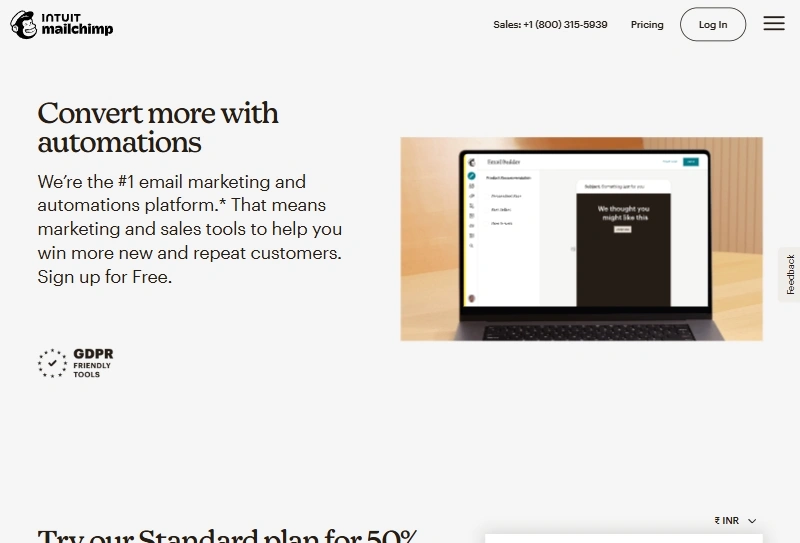
Launched by Ben Chestnut and Dan Kurzius as a small-scale side project while they ran their web design agency, Mailchimp had modest beginnings. Initially paid-only, it experienced a game-changing moment in 2009 when a freemium model was introduced. It attracted a wave of users, and the platform began growing exponentially, jumping from 85,000 users to 450,000 within just a year.
By offering core email marketing services for free, Mailchimp created a gateway for small businesses to explore its premium offerings and scale up their marketing efforts. Over time, Mailchimp evolved far beyond email marketing. Today, it integrates tools for social media management, landing page creation, and ad retargeting across platforms like Facebook and Instagram. So, it positions itself as a comprehensive marketing platform.
The transformation of Mailchimp has made it a reputed SaaS provider in the marketing automation industry. It was recognized by Fast Company as one of the Most Innovative Companies in 2017. The platform’s analytics capability, processing over 481 million email campaigns across 41 industries forms the backbone to the decision-making process of businesses.
With a user base largely made up of small businesses, Mailchimp’s adaptability to both B2B and B2C marketing makes it an appealing choice. Each day, thousands of new accounts are created, which showcases its continued relevance and appeal in the fast-paced marketing tech space.
18. Marketo (Adobe Marketo Engage)
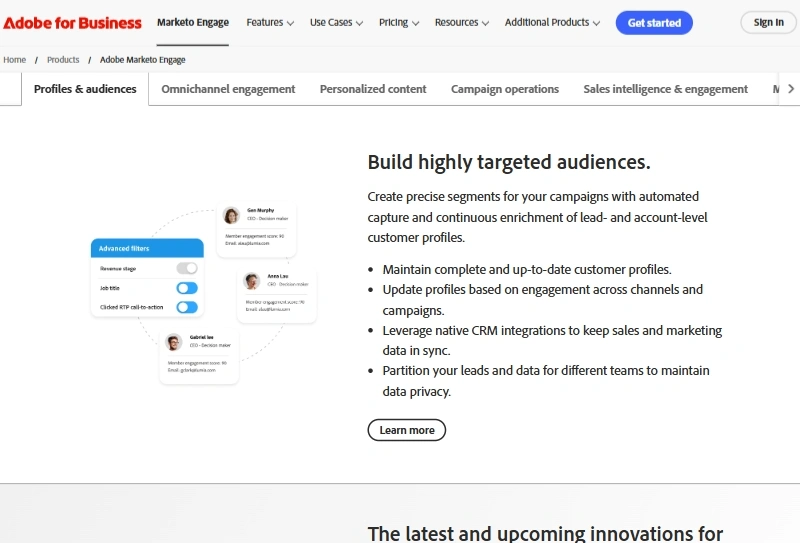
Phil Fernandez, Jon Miller, and David Morandi founded Marketo in 2006, with an aim to revolutionize how marketing teams measure ROI from their initiatives. From the outset, the founders understood that marketers needed more than basic tools—that they needed data-backed proof of success.
Marketo quickly gained recognition for its ability to turn marketing campaigns into measurable results, as evidenced by the staggering $2.3 billion pipeline revenue generated from just one webinar. Soon, Marketo became a leader in marketing automation. In 2018, Adobe acquired Marketo at $4.75 billion.
The platform is also markedly scalable as is proved through its use. While the average campaign might see around 8,900 emails sent, there have been outliers where campaign emails exceeded millions. Marketo is thus adaptable and offers a powerful infrastructure, which makes it one strong choice for larger enterprises with massive marketing efforts. Open rates average at 30%, but certain campaigns have achieved remarkable rates of 90%, with click-to-open metrics also soaring high, which proves its effectiveness in driving engagement.
On average, companies using Marketo report a significant improvement in time to sale and significant improvements in engagement—some seeing a sixfold increase. The platform’s success has not gone unnoticed, as it has consistently been recognized in the Gartner Magic Quadrant for CRM Lead Management and earned multiple awards for innovation.
Entertainment
SaaS applications have opened the doors to a world where the screen is always alive with possibilities. Netflix is a top SaaS platform that follows this thought. Keeping the world captivated, it has brought a revolution in subscription-based models. However, it didn’t reach this stage in a day, as we see how it became an OTT leader from a tiny startup.
19. Netflix
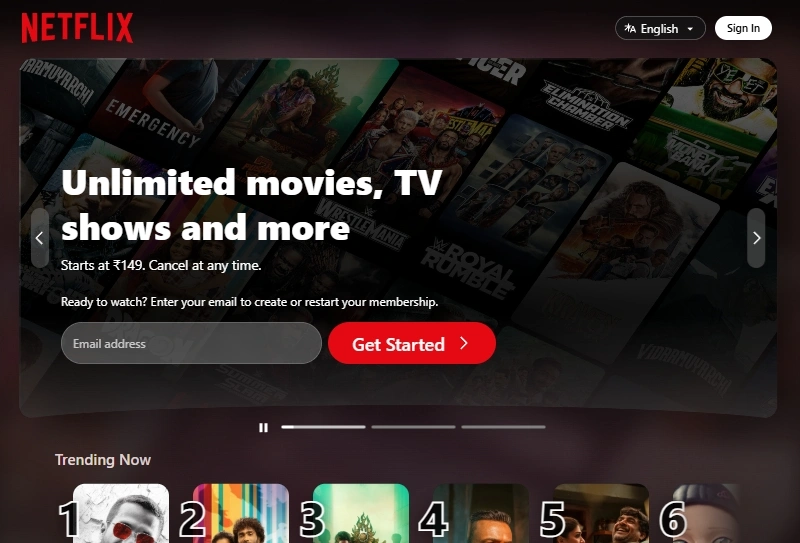
Revolutionizing the OTT realm, Netflix has come a long way since its early days as a DVD rental service. Reed Hastings and Marc Randolph, the founders, saw the potential of offering an online platform for renting movies in 1997 when streaming services were still a distant reality.
What started as a simple idea to make DVD rentals more convenient soon evolved into a full-scale media giant. By the early 2000s, capitalizing on the rise of internet speeds and consumer demand for on-demand entertainment, Netflix transitioned to streaming, and marked the beginning of its journey as one of the most dominant forces in the streaming industry.
Today, Netflix is present in over 190 countries, and has around 278 million subscribers. It has expanded far beyond its initial scope, and is successfully competing with other streaming platforms like Disney+ and Amazon Prime Video. The business model is flexible to navigate the upheavals in SaaS competition and keep the product on top.
Netflix sets itself apart with its vast library of original content and an AI-based recommendation system that accounts for 80% of views on the platform. By offering personalized experience, Netflix maintains a strong presence in the video-on-demand space. It has come up with out-of-the-box strategies to adapt market trends and this is how it keeps itself ahead of competitors.
Recent strategies, like introducing an ad-supported tier in 2022, helped Netflix tackle subscriber losses in saturated markets like North America. Users who were hesitant about the full subscription price were offered flexibility. Anyway, along with its increasing global subscriber base and a revenue boost of over $33.7 billion in 2023, Netflix remains a trailblazer, and with its unique model retains leadership in an increasingly crowded streaming market.
Customer Support and Engagement
The high value of customer support for businesses is demonstrated by the need for specialized SaaS apps to manage it. Proving this viability, Intercom has become a go-to solution for businesses looking to offer personalized, real-time support, as we explore.
20. Intercom
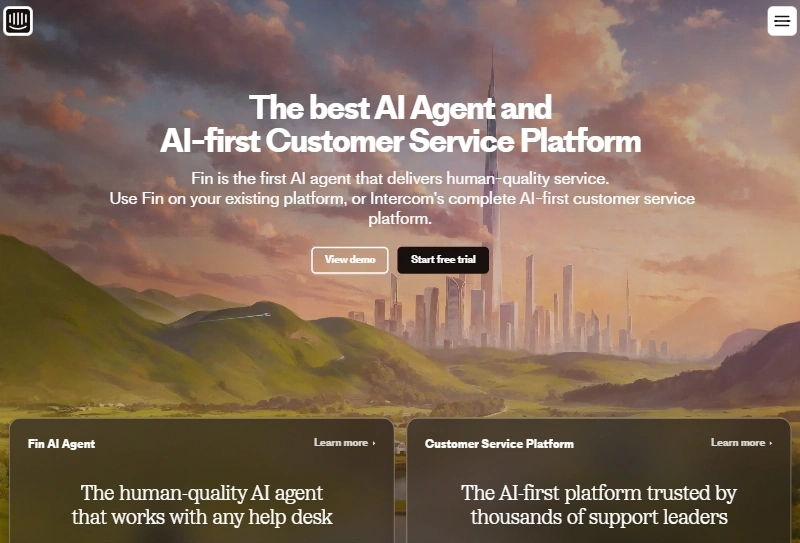
Intercom stepped onto the scene in 2011 with a clear objective: to transform how businesses communicate with their customers. It was founded by Eoghan McCabe, Des Traynor, David Barrett, and Ciaran Lee, and was initially focused on startups and small businesses. Soon, its intuitive design and powerful features caught the eye of larger businesses. This was possible by sticking to SaaS design best practices and keeping customer expectations in mind.
At the heart of Intercom’s success lies its ability to streamline communication through features tailored for sales, marketing, and customer service. The goal is simple—make customer engagement easy by removing the barriers that traditionally hindered online conversations.
As it evolved, Intercom expanded its offerings, offering AI-driven capabilities for boosting efficiency in customer service. By automating repetitive tasks and anticipating customer needs, these AI tools allow businesses to scale their customer support without losing the personal touch.
Intercom’s platform now supports over 600 million active users and generates a staggering 500 million messages every month. The result? Companies like Atlassian, Amazon, and Lyft have embraced the platform to stay connected with their customers on a deeper level.
The company’s growth trajectory speaks volumes. With over $240 million raised from investors like Kleiner Perkins and Bessemer Venture Partners, Intercom has seen its annual recurring revenue jump from $50 million in 2013 to an impressive $250 million in 2022. While it initially focused on startups, Intercom has expanded its target market to include larger enterprises, all without losing sight of the small businesses that helped it grow.
Takeaway: Best SaaS demands Diligent Efforts
These were the 20 best SaaS applications that must always be looked at by an entrepreneur. Easily accommodating a growing user base without faltering and constantly innovating themselves, these tools have offered adaptability and scalability that today makes them stand out in a crowded market. Along with technological strategy, how they overcame the marketing challenge and deal with factors affecting costs is equally important.
In general, if we observe, SaaS remains an intensely competitive field, where only those willing to innovate and adapt to changes can maintain their success but only when they have the right SaaS development talent at their disposal. SaaS outsourcing benefits here as it takes away the overall burden concerning SaaS development complexities.
You might be having some of the best SaaS ideas with you. As a trusted SaaS development service provider, Finoit knows how to tackle the emerging challenges in the space effortlessly.
Our proven expertise will help you effortlessly convert your ideas into a successful SaaS product.
